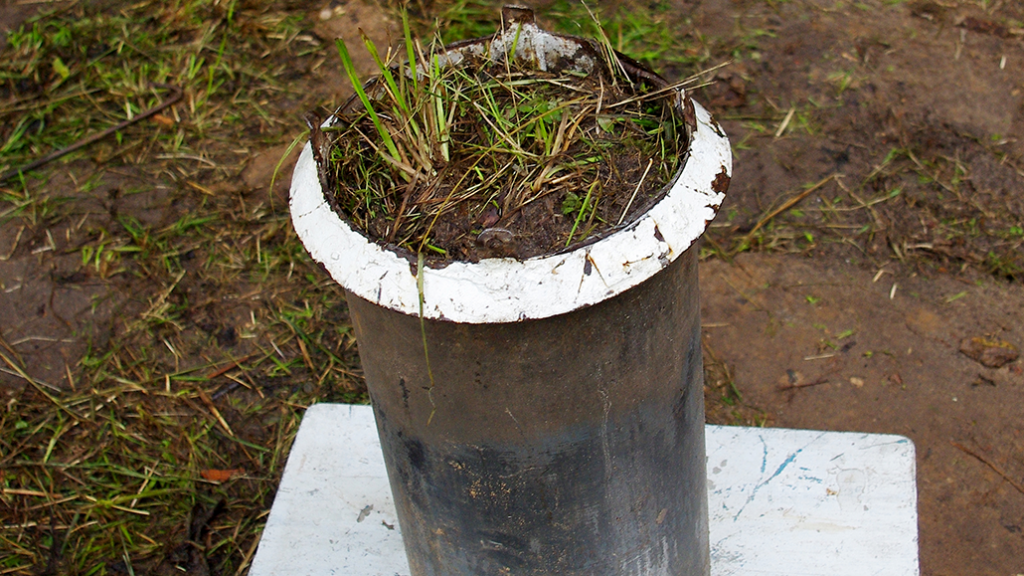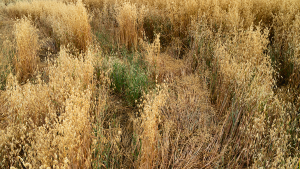The value of soil health
MEASURING THE BENEFITS OF ECOSYSTEM SERVICES

ESTABLISHING A DIVERSE crop rotation is thought to be a strategy that farmers can use to improve soil health. But what are the environmental and economic benefits of the ecosystem services provided by diverse systems? It’s a question University of Guelph researchers set out to answer in a comprehensive five-year study.
Professor and research leadership chair Dr. Claudia Wagner-Riddle, School of Environmental Sciences, used state-of-the-art field weighing lysimeters at the Soil Health Interpretative Centre at the Elora Research Station to compare soil health in simple and diverse rotations.
“We applied treatments that are recommended for improved soil health, such as crop rotation, diversification, and use of cover crops, and closely followed what happened in the soil cores over time,” she says.
HIGH-TECH MONITORING
Funded by Grain Farmers of Ontario, the five-year study commenced in the spring of 2016 after the soil research facility was built. It involves 18 lysimeters, or large cores of undisturbed soil, weighing two to three tonnes each. The underground steel cylinders sit on three load cells so they are able to be weighed and have sensors at various levels to measure soil water content, soil temperature and greenhouse gas concentrations and emissions.
Half of the units contain silt loam from Elora and the other nine contain loamy sand from a farm in Cambridge. After baseline data was collected in 2016, a soy-soy-corn rotation was continued in a subset of lysimeters and a diverse rotation of soy-wheat with cover crop-corn with cover crop was started in another subset. The cover crop mixes included oats, cereal rye, crimson clover and radish.
This experimental set-up meant that two different crop rotations in two different soil types could be compared side-by-side in the exact same environment.
ENVIRONMENTAL FINDINGS
As expected, the researchers observed consistently lower yields in the loamy sand lysimeters compared to the silt loam. The overall data indicates that a diverse rotation with cover crops does not significantly impact yields over a period of five years, in comparison to the conventional rotation.
In the third year, however, Wagner-Riddle notes that soybean yield in the diverse rotation was higher due to increased water availability.
“We don’t know exactly why there is more water availability under the diverse rotation,” she explains. “But we think the presence of cover crops the year before allowed for more water capture through their root channels.”
The study also determined that the use of cover crops reduced nitrate leaching by 70 per cent over one growing season when the cover crops established very well.
ECONOMIC FINDINGS
Dr. Alfons Weersink and former graduate student Daniel Schuurman, Department of Food, Agricultural and Resource Economics, collaborated with Wagner-Riddle for the economics portion of this study.
Schuurman used a dynamic programming model to measure the economic value of the ecosystem services provided by diverse rotations. He utilized yield, soil carbon and nitrous oxide data from the long-term rotation trials in Elora and calculated the profitability of each rotation. The model suggests the optimal rotation plan for a farm, given the initial soil conditions and crop history.
He found that the value of adding winter wheat and cover crops to a conventional rotation depends on the value a farmer places on long-term productivity, their risk preferences and the initial level of soil health.
The research indicated that corn-soy rotations are optimal for fields with moderate to high levels of soil carbon and adding wheat to the rotation is optimal for fields with low soil carbon. The inclusion of red clover was only found to be optimal if the field has low soil carbon and is managed by a farmer who is interested in value beyond a two-year horizon.
“The benefits from soil carbon and healthier soil take some time to be felt, so in the very short term, planting red clover or diversifying the rotation can impact the bottom line,” explains Shuurman, noting that farmers may have a shorter planning horizon for rented land. Diverse rotations are financially optimal in long-term planning, or for farmers who manage their own land.
The impact of cost-share programs and ecosystem service markets were also added to the model.
“Carbon credits or cost-share programs are best served focusing on cover cropping to diversify rotations instead of winter wheat,” says Schuurman. This is primarily due to the increase in nitrous oxide emissions in wheat offsetting the benefits of carbon sequestration.
NEXT STEPS
While the initial five-year study is now complete, Wagner-Riddle stresses the importance of continuing soil monitoring to obtain a longer data set. She is now continuing this research under new funding and expects to find improvements in soil condition in the lysimeters with the diverse rotation.
“It is important to understand the soil processes and determine how long we have to wait to see benefits,” she says. “It’s about quantifying the benefits for farmers in terms of yield, but also for society in terms of improvement in ecosystem services that can be gained from improved cropping management.”
We acknowledge the support of the Natural Sciences and Engineering Research Council of Canada (NSERC).
This project was funded in part by the government of Ontario. •










